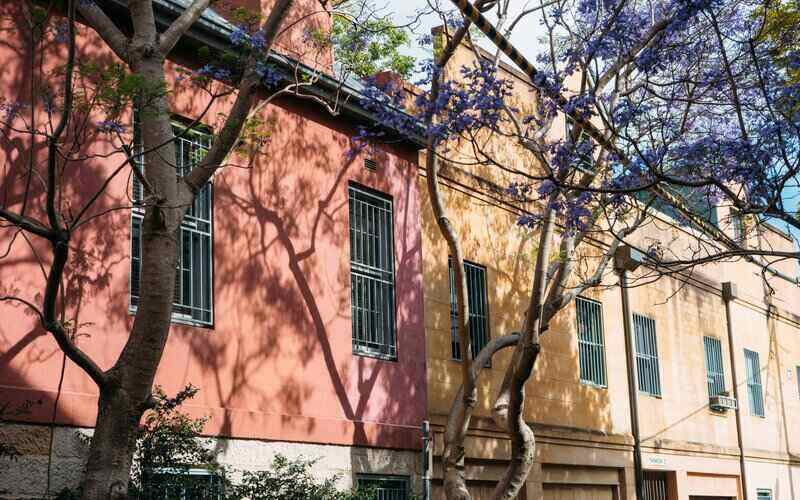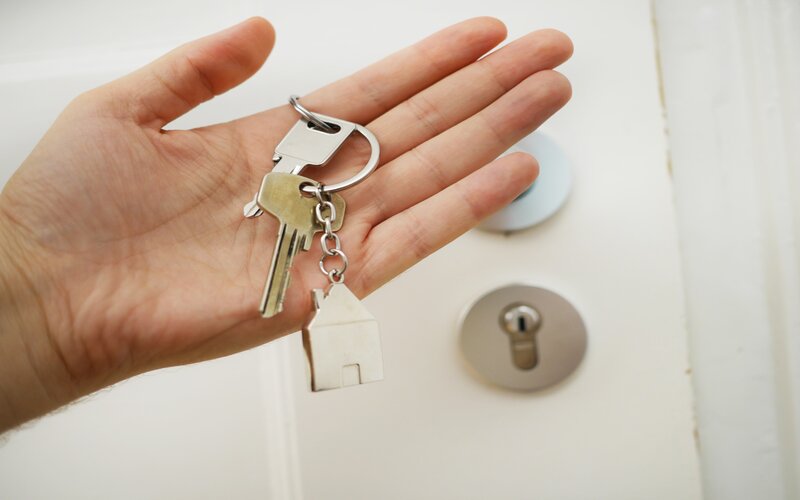Sucasa (as in ‘Mi casa su casa’) was established in 2022, with a mission statement to improve home ownership for Australian families. Its unique selling point is simple: Sucasa home loans don’t include one of the traditional barriers to buying a home, lenders mortgage insurance (LMI).
Generally speaking, Australian borrowers are charged LMI when their loan to value ratio (LVR) is above 80%. It’s to protect lenders from the risk of loss if the borrower defaults and it can’t recoup the full loan amount from repossessing the property.
The risk is passed on to the insurer, while the borrower pays the premiums for the policy. This can be expensive: on a $675,000 loan for a property valued at $750,000 (90% LVR), the LMI premiums would be $13,500, per the Savings.com.au LMI Calculator.
Adam Trouncer, Co-Founder and COO, says Sucasa is different, willing to take the risk and back “young, hard working Australians.”
“We think there are a lot of very credit-worthy borrowers out there who have good jobs, good incomes, and might be professionals that might be in skilled trades that are being charged too much for home loans above 80%,” he told the Savings Tip Jar podcast.
“Our focus is being best priced in market for loans between 80 to 95%, LVR.”
Sucasa home loans allow unlimited extra repayments at no fees, and free redraws. There are also no monthly, annual or application fees. Mr Trouncer said pre-approval can be granted in as little as 20-30 minutes, helping Aussies shop for a home with more confidence.
So, how do Sucasa’s home loans work?
Sucasa Home Loans - How They Work
Within a Sucasa home loan with an LVR of greater than 80%, there will be multiple interest rates at work. Tiered interest rates are nothing new - various banks offer them on 95% LVR loans but they might not be as upfront about it.
Under a ‘tiered’ arrangement, one rate may apply for the first 80% LVR portion, at a lower rate; while the next portion up to 95% LVR will be on an ‘Accelerator’ rate. On the other hand, you might opt for a lower-rate option on the whole loan but have more fees to pay. The choice is yours.
Accelerator rates
Sucasa is able to offer home loans without LMI by splitting the loan into two portions. The primary loan, which is the portion of the loan up to 80% of the property value, then the remainder, known as the Accelerator Loan.
If you borrowed $475,000 from Sucasa to purchase a property valued at $500,000 (which would make your LVR 95%), the primary loan would be $400,000, and the Accelerator loan would be the remaining $75,000. Both loans are then paid off simultaneously. Customers can make unlimited additional extra repayments on the Accelerator loan, bringing down LVR and potentially the interest rate.
Sucasa has flexible loan terms for different borrowers. For example, Low Fee loans have low establishment fees, but a higher interest rate on the Accelerator loan, which could suit borrowers with a strong income, but limited savings.
Ultra Low rate home loan
On the Ultra Low Rate Home Loan, both the primary and Accelerator portions are repaid at a lower rate. This product has higher establishment fees than the low fee option, but these are likely to be well under the LMI premiums on an equivalent product elsewhere.
Mr Trouncer told Savings.com.au that Sucasa aims to always have lower upfront costs and lower rates than any loan with LMI for a given LVR.
If you find a cheaper LMI offer that applies to a comparable 85-95% LVR variable owner occupier home loan of the same size with a comparable interest rate to the product being compared, Sucasa vows to beat it and give you $1,000.
Buying a home or looking to refinance? The table below features home loans with some of the lowest interest rates on the market for owner occupiers.
| Lender | Home Loan | Interest Rate | Comparison Rate* | Monthly Repayment | Repayment type | Rate Type | Offset | Redraw | Ongoing Fees | Upfront Fees | Max LVR | Lump Sum Repayment | Extra Repayments | Split Loan Option | Tags | Features | Link | Compare | Promoted Product | Disclosure |
|---|---|---|---|---|---|---|---|---|---|---|---|---|---|---|---|---|---|---|---|---|
5.89% p.a. | 6.16% p.a. | $2,962 | Principal & Interest | Variable | $null | $null | 98% | |||||||||||||
5.89% p.a. | 6.16% p.a. | $2,962 | Principal & Interest | Variable | $null | $null | 98% | |||||||||||||
6.29% p.a. | 6.60% p.a. | $3,092 | Principal & Interest | Variable | $null | $null | 98% | |||||||||||||
6.56% p.a. | 6.77% p.a. | $3,180 | Principal & Interest | Variable | $null | $null | 98% | |||||||||||||
7.13% p.a. | 7.36% p.a. | $3,370 | Principal & Interest | Variable | $null | $null | 98% |
Sucasa Home Loan Eligibility
Sucasa offers owner occupier home loans up to 95% LVR, for new or established properties in capital city metro areas. Loans are all principal and interest, with no interest only option.
To apply, you’ll need to provide two identity documents (Passport, Drivers Licence, Medicare Card). Sucasa then runs a digital check of your financial situation using software from Basiq, which it will need permission for. You might be asked to show PDF versions of certain documents like payslips on top of this.
Other ways to get into the market without a 20% deposit
Getting together a deposit can be the most difficult obstacle on the path to home ownership, particularly amid higher costs of living. For those who don’t have a particularly impressive deposit, but are anxious to get their foot on the property ladder, Sucasa home loans could be worth considering.
Mr Trouncer told the podcast Sucasa home loans are another option for low deposit borrowers in Australia.
“The best [path to home ownership] is having rich parents and being able to have some people give you money or guarantee your loan. That's not available to other people,” he explained.
“Second is…the federal first time buyer scheme…great for some, but it's below a certain income threshold, and you need to be either a citizen or permanent resident.
“The third is taking a loan out with lenders mortgage insurance…we’ve created a fourth [option] where we’re able to back young Australians without taking that LMI.”
Just paying LMI
While LMI premiums can be expensive, plenty of people decide to bite the bullet and just pay it anyway. In 2022, the gross written premium for LMI at insurer QBE was $167 million, which was down 43% on the previous year.
Most lenders are happy to “bake in” the cost of LMI to the loan amount, so you don’t have to pay it all up front. This means you’ll pay interest on the LMI as well, but you may find this worth it to have a roof over your head and potentially have capital gains outstrip the outlay of LMI.
Get a Guarantor
One way to circumvent LMI is by getting a guarantor to co-sign your mortgage. Normally a close family member, a guarantor puts up equity in their own property as security for your loan, which can mean no LMI premiums.
However, if you fail to meet the repayments, the guarantor will be considered legally responsible for the loan, and could even lose their own house, so it isn’t something to take on lightly. This could make for a few awkward family dinners.
Government assistance
First Home Guarantee Scheme
The First Home Guarantee (FHBG) is a federal initiative to help more Australians buy their first home. The Government acts as guarantor for up to 15% of the property value, meaning you can borrow with a deposit as small as 5% and still not pay LMI. Until June 2025, there will be 35,000 spots issued each year to apply for. Depending on where the property is, there are price caps, and there are also maximum income thresholds to qualify.
First Home Owner Grants
Various state governments offer grants that may be considered by a lender as part of your deposit, and could help get you over the deposit hurdle. The most generous is Queensland at up to $30,000.
There are various price caps and other restrictions on these grants.
Read the full, comprehensive state-by-state guide.
Shared Equity Schemes
At a federal level, the government’s Help to Buy scheme chips in up to 40% of the value of the home with the proviso you gradually pay it back, or give the government the portion plus proportional capital gains when you sell.
Various state governments may also offer their own schemes. Once again, income and price caps apply.
Image by cottonbro via Pexels

Ready, Set, Buy!
Learn everything you need to know about buying property – from choosing the right property and home loan, to the purchasing process, tips to save money and more!
With bonus Q&A sheet and Crossword!




 Denise Raward
Denise Raward
 Harry O'Sullivan
Harry O'Sullivan
 Bea Garcia
Bea Garcia

 Aaron Bell
Aaron Bell

